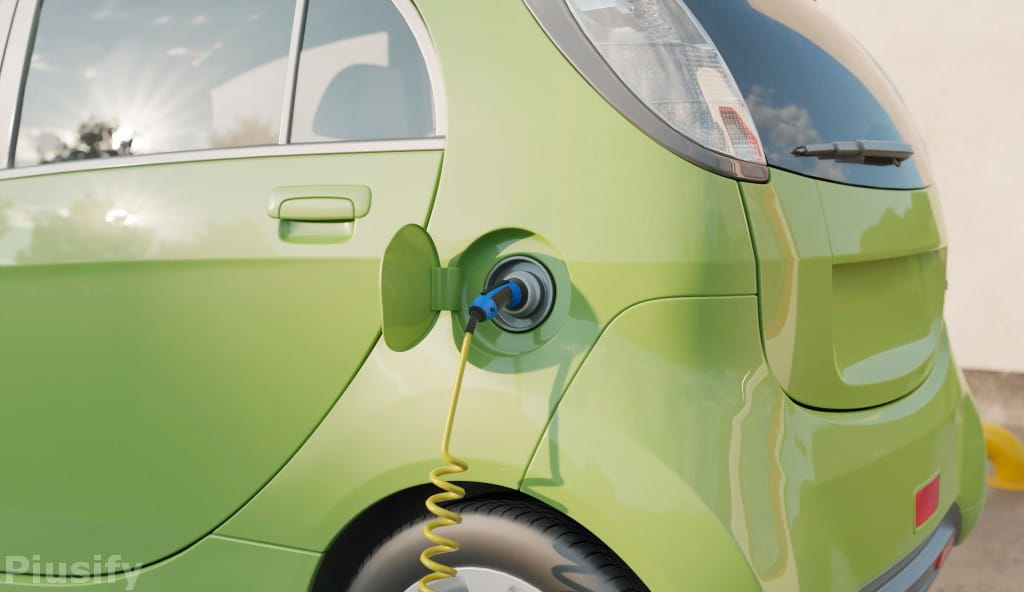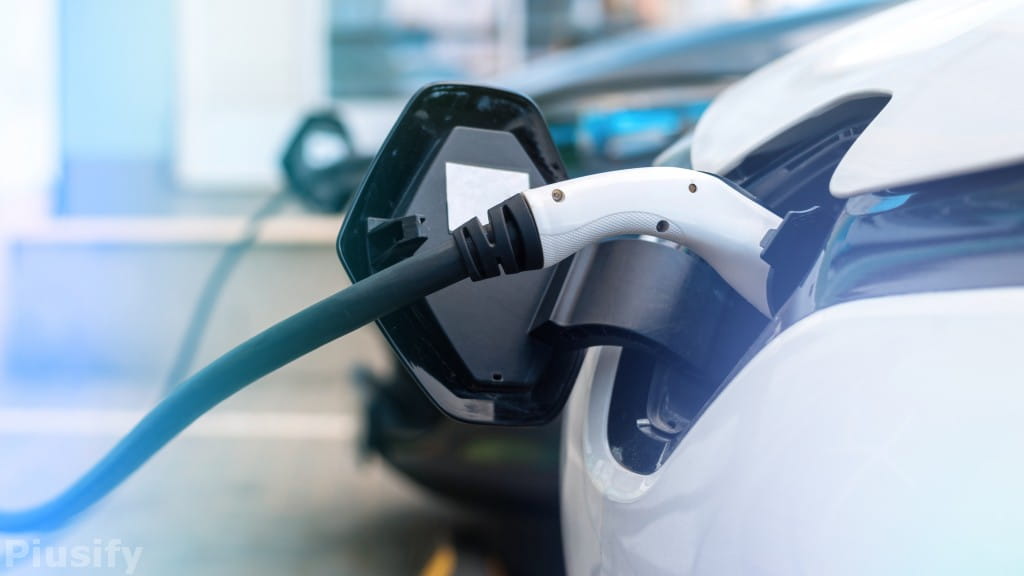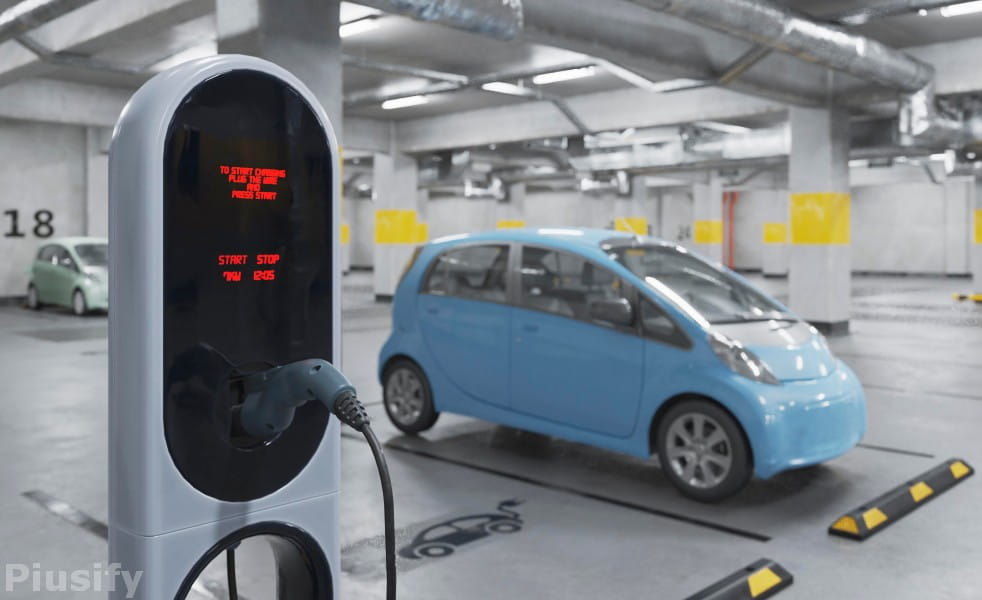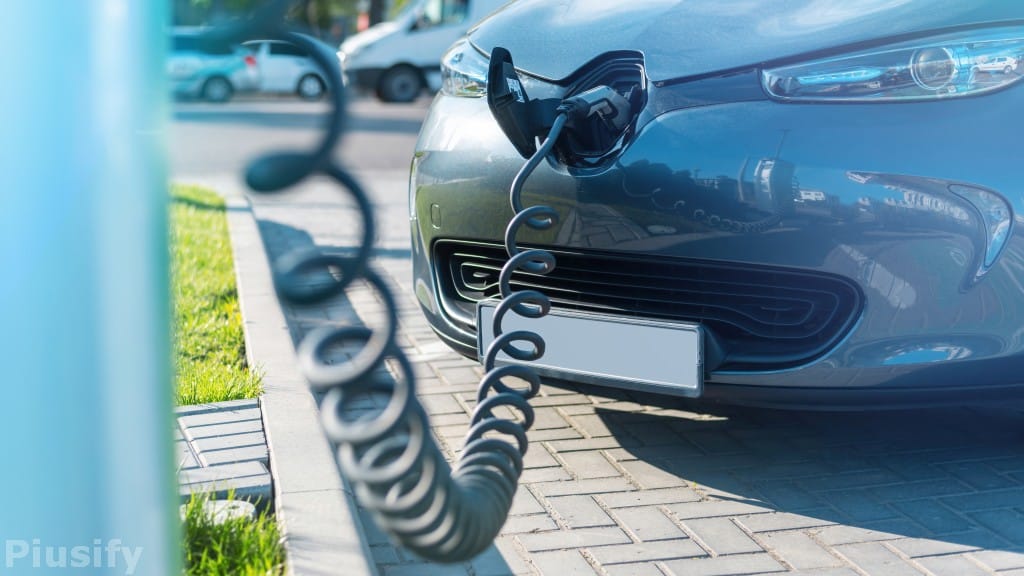Electric Vehicles: The Road to Sustainable Transportation
As the world grapples with the pressing challenges of climate change and dwindling natural resources, the transition to sustainable transportation has never been more crucial. Electric vehicles (EVs) are at the forefront of this revolution, promising not only to reduce our carbon footprint but also to reshape the way we think about mobility.
With advancements in technology, growing infrastructure, and a global push toward greener alternatives, EVs are rapidly becoming an integral part of our everyday lives. From urban commuters seeking efficient solutions to environmentally conscious families looking to minimize their impact, electric vehicles offer a thrilling glimpse into a cleaner, more sustainable future.
In this blog post, we’ll explore the journey toward electrifying our roads, the benefits of electric transportation, and the innovations driving this transformative movement. Buckle up as we delve into how electric vehicles are paving the way for a brighter, sustainable tomorrow!
-
Introduction: The Need for Sustainable Transportation
As the world grapples with the pressing realities of climate change and environmental degradation, the need for sustainable transportation has never been more urgent. Traditional vehicles, powered by fossil fuels, have long been a significant contributor to greenhouse gas emissions, air pollution, and reliance on dwindling natural resources. This unsustainable model not only poses grave threats to our planet but also to public health, leading to increased respiratory issues and other health complications in urban areas.
Sustainable transportation, particularly through the adoption of electric vehicles (EVs), presents a beacon of hope in our quest for a cleaner, greener future. Electric vehicles offer a pathway to reduce our carbon footprint significantly, utilizing renewable energy sources, such as solar and wind, to power our travels. Moreover, advancements in battery technology and charging infrastructure promise to make EVs more accessible and efficient than ever before.
But the transition to sustainable transportation is about more than just technology; it’s a societal shift, requiring collaboration among governments, businesses, and consumers. Policymakers increasingly recognize the need to implement incentives for EV adoption, invest in charging stations, and promote sustainable public transportation options. Meanwhile, automakers are innovating, introducing a diverse range of electric models to meet varying consumer needs from compact cars to heavy-duty trucks.
In this blog post, we will explore the multifaceted importance of sustainable transportation, the role of electric vehicles in this paradigm shift, and the various steps that can be taken to accelerate this transition. Join us on this journey as we delve into the electrifying future of mobility and the collective actions necessary to create a sustainable world for generations to come.
-
Understanding Electric Vehicles (EVs): Types and Technologies

Understanding Electric Vehicles (EVs) is crucial for grasping their role in the transition to sustainable transportation. EVs can be categorized into several types, each with unique technologies and benefits that cater to different driving needs and energy sources.
Battery Electric Vehicles (BEVs) are the most recognized form of electric vehicles. These fully electric cars rely solely on rechargeable batteries to power an electric motor, meaning they produce zero tailpipe emissions. With advancements in battery technology, BEVs offer impressive ranges, often exceeding 300 miles on a single charge, making them viable for daily commuting and long-distance travel alike. Notable examples include the Tesla Model 3 and the Nissan Leaf, which have gained popularity for their efficiency and performance.
Plug-in Hybrid Electric Vehicles (PHEVs) combine traditional internal combustion engines with electric propulsion. They can be charged via an external power source and run on electricity for short distances before switching to gasoline or diesel for longer trips. This hybrid approach offers flexibility, allowing drivers to benefit from electric driving for their daily needs while having the backup of a conventional engine for extended journeys. Popular PHEVs like the Toyota Prius Prime and the Ford Escape Hybrid illustrate this balance of electric and traditional power.
Hybrid Electric Vehicles (HEVs), while similar to PHEVs, don’t require plugging in. Instead, they use regenerative braking and the internal combustion engine to charge the battery. HEVs can provide improved fuel efficiency and reduced emissions without the need for external charging infrastructure, making them an attractive option for consumers hesitant to fully commit to electric driving.
Lastly, Fuel Cell Electric Vehicles (FCEVs) operate differently by converting hydrogen gas into electricity, producing only water vapor as a byproduct. These vehicles offer quick refueling times and long ranges, similar to gasoline vehicles, but the infrastructure for hydrogen refueling is still limited in many areas. The Toyota Mirai and the Honda Clarity Fuel Cell are examples of FCEVs making strides in this innovative space.
As technology continues to evolve, the landscape of electric vehicles is rapidly changing. Understanding the different types and their respective technologies not only helps consumers make informed choices but also highlights the diverse pathways toward a more sustainable transportation future. Each type of EV plays a pivotal role in reducing greenhouse gas emissions, promoting energy independence, and paving the way for a cleaner, greener world.
-
The Environmental Impact of Traditional Vehicles
The environmental impact of traditional vehicles is a pressing issue that cannot be overlooked in our quest for sustainable transportation. For decades, gasoline and diesel-powered cars have dominated the roads, emitting harmful pollutants that contribute to climate change and deteriorate air quality. The combustion of fossil fuels releases carbon dioxide (CO2), nitrogen oxides (NOx), particulate matter, and volatile organic compounds (VOCs) into the atmosphere. These emissions are not only detrimental to the environment but also pose significant health risks to humans, causing respiratory problems, heart disease, and other serious health conditions.
Moreover, traditional vehicles are major contributors to global warming. The transportation sector accounts for a substantial portion of greenhouse gas emissions, making it one of the largest sources of pollution worldwide. As cities grow and populations rise, the number of vehicles on the road continues to increase, exacerbating these environmental issues. The reliance on fossil fuels also raises concerns about resource depletion and energy security, as reserves of oil are finite and increasingly difficult to access.
The impact of traditional vehicles extends beyond just emissions. Roadways and urban infrastructure have been designed around the needs of internal combustion engine vehicles, leading to urban sprawl, habitat destruction, and increased noise pollution. This not only affects wildlife but also disrupts ecosystems, contributing to biodiversity loss.
In contrast, electric vehicles (EVs) offer a promising solution to these challenges. By transitioning to electric transportation, we can significantly reduce emissions, improve air quality, and foster a more sustainable future. Understanding the environmental toll of traditional vehicles is crucial as we pave the way for innovative alternatives that prioritize both our planet and our health. The shift to electric vehicles represents not just an evolution in technology, but a revolution in how we approach our relationship with the environment.
-
Benefits of Electric Vehicles: Beyond Emissions
When we think about electric vehicles (EVs), the conversation often revolves around their potential to reduce greenhouse gas emissions and combat climate change. However, the benefits of EVs extend far beyond just lowering emissions. As we delve deeper into the advantages of sustainable transportation, it becomes clear that electric vehicles offer a multitude of perks that can transform our daily lives and the environment.
First and foremost, EVs promise significant savings on fuel costs. With electricity generally being cheaper than gasoline, drivers can enjoy lower operational expenses. This cost-effectiveness is further amplified as many EV owners take advantage of home charging stations or public charging networks that offer competitive rates. Over time, these savings can translate into substantial financial relief for families and businesses alike.
Moreover, electric vehicles contribute to improved air quality. Traditional combustion engines emit harmful pollutants such as nitrogen oxides and particulate matter, which can lead to respiratory issues and other health problems. By transitioning to EVs, urban areas can experience a noticeable reduction in air pollution, leading to healthier communities and a better quality of life. Imagine a city where the air is fresher, and the streets are quieter. This is a reality that electric vehicles can help create.
Additionally, electric vehicles are equipped with advanced technology that enhances the driving experience. Many EVs come with features like regenerative braking, which recapture energy and boosts efficiency, and sophisticated onboard systems that provide real-time data on vehicle performance. These innovations not only make driving more enjoyable but also encourage more mindful consumption of energy.
Furthermore, the shift to electric vehicles is a catalyst for job creation and economic growth. As the EV market expands, new opportunities arise in manufacturing, infrastructure development, and maintenance services. This burgeoning industry not only fosters innovation but also promotes sustainability-focused careers, positioning communities for a greener future.
Finally, investing in electric vehicles supports energy independence. By reducing reliance on fossil fuels, countries can bolster their energy security and mitigate the impact of fluctuating oil prices. This shift not only strengthens local economies but also empowers nations to pursue renewable energy sources, paving the way for a sustainable future.
In summary, while the environmental benefits of electric vehicles are significant, the advantages extend much further. From cost savings and improved air quality to technological advancements and economic opportunities, the transition to electric vehicles is a key component of a sustainable transportation strategy that can electrify our future in countless positive ways.
-
The Role of Renewable Energy in Charging EVs

As the adoption of electric vehicles (EVs) accelerates, so too does the importance of integrating renewable energy sources into the charging infrastructure that powers them. The role of renewable energy in charging EVs is not just a supplementary benefit; it is a cornerstone of creating a truly sustainable transportation ecosystem.
Imagine a world where the energy that powers your electric car comes from the sun, wind, or hydroelectric sources, significantly reducing the carbon footprint associated with vehicle operation. This synergy between EVs and renewable energy is crucial for several reasons.
Firstly, charging EVs with clean energy ensures that the environmental benefits of electric vehicles are maximized. While EVs produce zero tailpipe emissions, the overall sustainability of their operation hinges on the source of the electricity used to charge them. By utilizing solar panels, wind turbines, and other renewable energy technologies, we can ensure that the energy feeding into EVs is as clean as the vehicles themselves.
Moreover, the growth of renewable energy is paving the way for innovative charging solutions. For instance, solar-powered charging stations are becoming increasingly popular, allowing drivers to tap into clean energy while on the go. These stations can be installed in parking lots, at workplaces, or along highways, making it convenient for EV owners to charge their vehicles without relying on fossil fuels. Additionally, advancements in battery storage technology mean that excess energy generated from renewable sources can be stored and used during peak demand times, further promoting energy efficiency.
The integration of renewable energy into EV charging also fosters a more resilient electricity grid. As more drivers transition to electric, the demand for charging will rise. By harnessing renewable energy, we can reduce reliance on traditional power plants, which often struggle to keep pace with increased demand. Instead, a decentralized approach to energy production empowers communities and enhances grid stability, ensuring that power is available when and where it is needed most.
In summary, the role of renewable energy in charging electric vehicles is pivotal in the journey toward a sustainable transportation future. By embracing clean energy solutions, we can amplify the environmental benefits of EVs, innovate our charging infrastructure, and create a resilient energy system that supports both current and future generations. As we look ahead, the fusion of electric vehicles and renewable energy will undoubtedly drive us toward a cleaner, more sustainable world.
-
Government Policies and Incentives Supporting EV Adoption
As the world increasingly acknowledges the urgent need to combat climate change, governments across the globe are stepping up to play a pivotal role in promoting the adoption of electric vehicles (EVs). Policies and incentives designed to encourage consumers and manufacturers alike are reshaping the transportation landscape, making electric mobility not just a dream, but a practical reality.
Many countries have introduced generous tax credits and rebates for individuals purchasing electric vehicles, significantly lowering the upfront costs that often deter buyers. In the United States, for instance, the federal government offers a tax credit of up to $7,500, while numerous states provide additional incentives, ranging from sales tax exemptions to rebates on registration fees. These financial boosts make the switch to electric vehicles more appealing than ever.
Beyond financial incentives, governments are also investing in the infrastructure necessary to support widespread EV adoption. This includes funding for the installation of charging stations in urban areas, along highways, and in rural communities making it easier for drivers to charge their vehicles on the go. By expanding the charging network, policymakers aim to alleviate range anxiety, a common concern among potential EV buyers worried about being stranded without a charging option.
Regulatory frameworks are evolving as well, with many regions setting ambitious targets for phasing out internal combustion engine vehicles. For instance, several countries have announced plans to ban the sale of new gasoline and diesel cars by 2030 or 2035, pushing consumers to consider electric alternatives. These policies signal a clear commitment to a sustainable future and encourage manufacturers to invest more heavily in EV technology.
Additionally, governments are exploring innovative approaches to promote EV usage, such as offering carpool lane access for electric vehicles, creating low-emission zones in city centres, and providing free or discounted parking for EVs. These perks not only enhance the convenience of owning an electric vehicle, but also reinforce the social and environmental benefits of making the switch.
In conclusion, government policies and incentives are crucial components in the journey towards sustainable transportation. By fostering an environment that supports electric vehicle adoption, these initiatives are not only helping to reduce greenhouse gas emissions but are also paving the way for a cleaner, greener future. As consumers become more aware of these benefits, the electrification of transportation will continue to accelerate, transforming roads and cities around the world.
-
Overcoming Range Anxiety: Advancements in Battery Technology
One of the most significant barriers to widespread adoption of electric vehicles (EVs) has been range anxiety, the fear that a vehicle’s battery will deplete before reaching its destination or that charging stations will be scarce. However, recent advancements in battery technology are rapidly alleviating these concerns, paving the way for a more sustainable and confident driving experience.
Modern electric vehicles are now equipped with lithium-ion batteries that boast impressive energy densities, which translate to longer ranges on a single charge. For instance, many new models can travel over 300 miles on a full charge, rivalling the distance capabilities of traditional gasoline vehicles. This remarkable improvement stems from innovations in battery chemistries and designs, such as the development of solid-state batteries, which promise even higher energy capacities and faster charging times.
Furthermore, the expansion of fast-charging infrastructure is playing a pivotal role in overcoming range anxiety. Charging stations are increasingly popping up along highways and in urban areas, allowing drivers to recharge their vehicles in a fraction of the time it takes to fill a gas tank. With advancements like ultra-fast chargers capable of delivering 80% charge in just 30 minutes, the practicality of EVs is becoming more appealing to consumers.
Moreover, automakers are investing heavily in research and development to improve battery longevity and reduce charging times. Companies are exploring innovative solutions like battery swapping, where depleted batteries can be exchanged for fully charged ones within minutes, offering a seamless alternative for drivers on the go.
As these technologies continue to evolve, the landscape of electric transportation is changing dramatically. By tackling the issue of range anxiety head-on, manufacturers and innovators are not only enhancing the driving experience but also reinforcing the viability of electric vehicles as a sustainable mode of transportation for the future. As consumers gain confidence in the range and convenience of EVs, we can expect a significant shift toward adopting cleaner, greener transportation solutions.
-
The Infrastructure Challenge: Charging Stations and Grid Capacity

As the world rapidly shifts towards a more sustainable transportation model, the adoption of electric vehicles (EVs) presents a significant opportunity and an equally daunting challenge. One of the primary hurdles in this transition is the development of adequate infrastructure, particularly charging stations and grid capacity.
Imagine the scene: a bustling city filled with sleek, silent electric cars gliding effortlessly down the streets. However, for this vision to become a reality, the groundwork must be laid to support the growing number of EVs on the road. Current charging networks are often sparse, leaving many potential EV owners hesitant due to fears of running out of power far from a charging station a phenomenon often referred to as range anxiety
To combat this, urban planners and governments must prioritize the installation of charging stations in strategic locations: shopping centres, parking garages, workplaces, and along highways. Fast-charging stations, capable of replenishing an electric vehicle’s battery in a matter of minutes, are particularly critical for long-distance travel and can provide a significant boost to consumer confidence in electric mobility.
However, the challenge doesn’t end with the physical installation of charging points. As the demand for EVs surges, so too does the strain on our existing electrical grids. The infrastructure must not only expand but also evolve to accommodate increased electricity consumption. Upgrading grid capacity to handle the influx of EVs is essential this includes investing in renewable energy sources to keep the charging process sustainable.
Innovative solutions, such as smart grids and vehicle-to-grid (V2G) technology, are emerging as vital components of this transformation. Smart grids can optimize electricity distribution and manage demand more efficiently, while V2G technology allows EVs to feed energy back into the grid during peak times, creating a symbiotic relationship between electric vehicles and the power grid.
In summary, overcoming the infrastructure challenge requires a multifaceted approach that combines strategic planning, technological innovation, and community involvement. By addressing the need for widespread charging stations and enhancing grid capacity, we can pave the way for a brighter, more sustainable future in transportation. The road ahead may be fraught with obstacles, but with concerted effort and investment, the electrification of our transportation systems is not just an ideal; it is an attainable reality.
-
Case Studies: Successful EV Adoption in Various Cities
As cities around the globe grapple with the pressing challenges of climate change and urban pollution, many have turned their gaze towards electric vehicles (EVs) as a beacon of hope for sustainable transportation. A closer look at several pioneering cities reveals inspiring case studies that showcase not only the feasibility but also the transformative impact of widespread EV adoption.
-
Oslo, Norway: A Model for Urban Electrification
Oslo has emerged as a frontrunner in the race toward electric mobility, boasting one of the highest per capita EV ownership rates in the world. The city has implemented a comprehensive strategy that includes extensive charging infrastructure, tax incentives for EV buyers, and exemptions from tolls and parking fees. As a result, electric vehicles now account for over 54% of new car sales, significantly reducing greenhouse gas emissions. The city’s commitment is further exemplified by its ambitious goal to become carbon neutral by 2030, a target heavily supported by its flourishing EV ecosystem.
-
Shenzhen, China: A Fully Electrified Bus Fleet
Shenzhen has taken EV adoption to a remarkable level by transitioning its entire fleet of over 16,000 public buses to electric. This monumental shift not only serves as a testament to the potential of electric buses in reducing urban air pollution but also highlights the efficacy of government policy in promoting sustainable transport. The city has invested heavily in charging infrastructure, ensuring that the fleet operates smoothly while also providing a cleaner alternative for public transportation. The positive environmental impact has been profound, with significant reductions in particulate matter and other harmful emissions.
-
Amsterdam, Netherlands: A Charging Network for All
Known for its progressive approach to transportation, Amsterdam has integrated electric vehicles into its urban landscape through a robust public charging network and a strong emphasis on cycling and public transit. The city has made it easier for residents and visitors alike to access charging stations, with over 3,000 charging points installed throughout the area. Amsterdam’s commitment to sustainability is also reflected in it’s Green Deal’ initiative, encouraging businesses and residents to invest in electric vehicles. As a result, electric car sales have surged, and the city’s air quality has improved dramatically.
-
San Francisco, USA: Embracing Innovation and Community Support
San Francisco is not only a hub for technological innovation but is also leading the charge in EV adoption through community engagement and public-private partnerships. The city has introduced various initiatives, such as electric car-sharing programs and incentives for local businesses to switch their fleets to electric. Furthermore, San Francisco’s commitment to sustainability is evident in its deployment of EV charging stations that cater to both residents and visitors. The city’s focus on education and outreach has fostered a culture of acceptance and enthusiasm for electric vehicles, setting the stage for a greener future.
These case studies illustrate the diverse strategies cities can implement to promote electric vehicle adoption and the resultant benefits that follow. From enhancing air quality to reducing carbon footprints, the road to sustainable transportation is paved with innovative and successful examples that underscore the potential of electric vehicles to reshape urban mobility for generations to come. As we look to the future, it is clear that the electrification of transportation is not just a trend, but a vital component in the fight against climate change.
-
The Future of Public Transportation: Electric Buses and Trains

As cities worldwide grapple with the challenges of urbanization and environmental sustainability, the future of public transportation is increasingly leaning towards electrification. Electric buses and trains are at the forefront of this transformation, offering a cleaner, quieter, and more efficient alternative to traditional fossil fuel-powered transit systems.
Imagine stepping onto a silent electric bus that glides smoothly down the street, emitting zero tailpipe emissions while providing a comfortable riding experience. These electric buses not only reduce air pollution but also significantly lower operational costs for transit authorities. With advancements in battery technology, modern electric buses have impressive ranges, allowing them to cover substantial distances on a single charge. They are equipped with regenerative braking systems that capture energy typically lost during braking, further enhancing their efficiency.
Similarly, electric trains are revolutionizing rail travel. High-speed electric trains are already dominating routes in Europe and Asia, offering swift and sustainable travel options. These trains utilize overhead wires or electrified tracks, providing a continuous source of power while significantly reducing greenhouse gas emissions compared to diesel alternatives. The infrastructure investments in electrified rail systems are proving to be worthwhile, as they lead to lower maintenance costs and a decrease in noise pollution, making train travel a more attractive option for commuters.
The shift towards electric public transportation is not just about technology; it’s a holistic approach to creating smarter, greener cities. Integrating electric buses and trains into existing transit networks encourages people to choose public transportation over personal vehicles, ultimately reducing traffic congestion and improving air quality. As cities expand their electrification efforts, they pave the way for a sustainable future where public transportation is not only efficient and accessible but also a vital part of combating climate change.
With government incentives and an increasing public demand for environmentally friendly solutions, the electrification of public transportation is set to accelerate. As we look ahead, the electrifying future of public transit promises a cleaner, more sustainable urban landscape, where electric buses and trains play a pivotal role in connecting communities and fostering a greener planet.
-
Challenges Facing the EV Market: Cost, Supply Chain, and Consumer Awareness
As the electric vehicle (EV) market continues to surge forward, it faces a trifecta of challenges that could impact its growth trajectory: cost, supply chain complexities, and consumer awareness.
-
Cost
The initial price of electric vehicles remains a significant barrier for many consumers. Despite the long-term savings associated with electric driving such as lower fuel costs and reduced maintenance expenses the upfront investment for most electric models is still higher than their gasoline counterparts. While government incentives and rebates can help offset these costs, the lack of affordable options in the market can deter potential buyers. As manufacturers strive to produce more budget-friendly options, the question remains: will they be able to maintain the quality and performance that consumers expect?
-
Supply Chain
The global supply chain for electric vehicle components is another critical hurdle. The production of electric vehicles relies heavily on a range of materials, including lithium, cobalt, and nickel for batteries. The extraction and processing of these materials can be fraught with challenges, including geopolitical tensions, environmental concerns, and labor issues. Moreover, the COVID-19 pandemic has highlighted vulnerabilities within the supply chain, leading to disruptions and delays that can hinder the timely delivery of EVs to market. Manufacturers must innovate to create a more resilient supply chain, ensuring that they can meet increasing demand without sacrificing sustainability.
-
Consumer Awareness
Finally, consumer awareness and understanding of electric vehicles play a pivotal role in their adoption. Misconceptions about range anxiety, charging infrastructure, and the overall performance of EVs can create hesitance among potential buyers. Many consumers remain unaware of the technological advancements that have significantly improved battery life and charging speed, or the growing network of charging stations that make long-distance travel feasible. Educating consumers about the benefits and realities of EV ownership is essential for overcoming these barriers and encouraging a shift toward sustainable transportation.
By addressing these challenges head-on, the electric vehicle market can pave the way for a more sustainable future, transforming the transportation landscape for generations to come. The journey may be fraught with obstacles, but the destination cleaner air, reduced emissions, and a greener planet is undoubtedly worth the effort.
-
The Role of Autonomous Vehicles in Sustainable Transportation
As we navigate the winding path toward a sustainable transportation future, the emergence of autonomous vehicles (AVs) represents a game-changing development. These self-driving cars, equipped with advanced sensors, cameras, and artificial intelligence, have the potential not only to revolutionize how we travel but also to significantly reduce our carbon footprint. By minimizing human error and optimizing driving patterns, autonomous vehicles can enhance fuel efficiency, decrease traffic congestion, and lower emissions.
Imagine a future where fleets of autonomous electric vehicles glide seamlessly through our cities, communicating with one another to reduce stop-and-go traffic and eliminate the unnecessary idling that contributes to air pollution. AVs can be programmed to choose the most efficient routes, thereby conserving energy and improving overall travel times. In urban environments where congestion is a common challenge, the intelligent traffic management systems that accompany autonomous technology can lead to smoother traffic flows, reducing the time we spend on the road and lessening our environmental impact.
Moreover, the integration of autonomous vehicles with public transportation systems can create a more cohesive and efficient transit infrastructure. Self-driving shuttles could serve as first- and last-mile solutions, making it easier for individuals to access public transport and encouraging a shift away from personal vehicle reliance. This transition is crucial in densely populated areas, where reducing the number of single-occupancy vehicles can lead to cleaner air and a more sustainable urban landscape.
However, the journey toward widespread adoption of autonomous vehicles is not without its challenges. Regulatory frameworks must evolve to address safety concerns, ethical dilemmas, and the integration of AVs into existing traffic systems. Public acceptance is another hurdle, as many consumers remain wary of relinquishing control to a machine. Yet, as technology advances and the benefits of autonomous electric vehicles become more apparent, it is likely that we will see a growing embrace of this innovative mode of transportation.
In conclusion, the role of autonomous vehicles in sustainable transportation is poised to be transformative. By drastically improving efficiency, reducing emissions, and enhancing public transport systems, AVs can help pave the way for a cleaner, more sustainable future. As we move forward, it will be essential to harness this technology responsibly, ensuring that it aligns with our broader goals of environmental stewardship and sustainable urban development.
-
Community Engagement: Promoting EV Awareness and Education
Community engagement plays a pivotal role in promoting electric vehicle (EV) awareness and education, serving as a catalyst for broader acceptance and understanding of sustainable transportation. As the shift towards electric mobility gathers momentum, it’s essential to involve local communities in this transition. By fostering dialogues, organizing events, and facilitating hands-on experiences, we can demystify EV technology and its benefits, making it more accessible to all.
One effective approach is to host community workshops or informational seminars that cover the basics of electric vehicles, how they work, their environmental advantages, and the financial savings they can offer over traditional gasoline-powered cars. These events can feature guest speakers, including local EV owners, industry experts, and government representatives who can share insights and answer questions. By showcasing real-world experiences, attendees can visualize themselves as part of the EV movement.
Additionally, engaging local schools and educational institutions is a powerful way to instill the principles of sustainability in the younger generation. Programs that incorporate EV-related projects or science fairs can spark interest in clean technology and inspire future innovators. Collaborations with schools can also include field trips to EV manufacturing plants or local dealerships, providing students with a first-hand look at the vehicles and the processes behind them.
Community events such as Vocation Days or ride-and-drive experiences offer a fun and interactive way for residents to test drive electric vehicles and learn about various models. These events can also feature local businesses, demonstrating the positive economic impact of embracing electric mobility. By uniting local stakeholder’s government, businesses, and residents we create a supportive network that fosters a culture of sustainability.
Social media and local newsletters can amplify these efforts, ensuring that information about EV initiatives reaches a broader audience. Sharing success stories, testimonials, and educational content can help dispel myths and highlight the tangible benefits of electric vehicles. By promoting charging infrastructure development and showcasing available incentives, we can encourage more individuals to consider making the switch.
In summary, community engagement is essential for promoting EV awareness and education. By creating a platform for dialogue and collaboration, we not only enhance understanding of electric vehicles but also empower individuals to take an active role in shaping a sustainable future. As more people embrace the benefits of EVs, we move one step closer to a cleaner, greener, and more electrifying tomorrow.
-
Looking Ahead: Innovations on the Horizon for Sustainable Transport
As we stand on the brink of an automotive revolution, the horizon glimmers with potential innovations that promise to redefine sustainable transportation. The electric vehicle (EV) landscape is rapidly evolving, driven by advancements in technology, changing consumer preferences, and a collective urgency to combat climate change.
One of the most exciting prospects is the development of solid-state batteries, which could significantly enhance the efficiency and range of electric vehicles. Unlike traditional lithium-ion batteries, solid-state batteries use a solid electrolyte, which not only allows for higher energy density but also improves safety by reducing the risk of fires. Imagine electric cars that can travel much longer distances on a single charge, with shorter charging times this could transform long-distance travel and eliminate range anxiety once and for all.
Additionally, the integration of artificial intelligence (AI) in EVs is set to revolutionize the driving experience. From predictive maintenance that alerts drivers to needed repairs before they become an issue, to intelligent navigation systems that optimize routes based on real-time traffic and charging station availability, AI will enhance both the safety and convenience of electric vehicles.
Moreover, advancements in vehicle-to-grid (V2G) technology are paving the way for a more sustainable energy ecosystem. This innovative system allows electric vehicles to not only draw power from the grid but also return it when needed, effectively turning cars into mobile power sources. This could help stabilize the energy grid, especially during peak demand times, and empower EV owners to potentially earn money by selling back excess electricity.
Lastly, the concept of mobility as a service (MaaS) is gaining traction, envisioning a future where public and private transport options are seamlessly integrated into a single platform. As cities become smarter, we could see a rise in shared electric vehicles, e-bikes, and even autonomous shuttles, all working in harmony to reduce congestion and lower emissions.
As we look ahead, the promise of these innovations offers not only a glimpse into a cleaner, more sustainable future but also the potential for a transformative shift in how we think about transportation. The road to sustainable transport is paved with creativity and ingenuity, and with each breakthrough, we draw closer to a world where electric vehicles are not just an alternative, but the standard.
-
Conclusion: Collective Responsibility for a Greener Future
As we stand at the crossroads of innovation and sustainability, the transition to electric vehicles (EVs) represents not just a technological shift, but a broader societal awakening to our collective responsibility for the planet. The journey toward sustainable transportation is not solely the responsibility of manufacturers or policymakers; it requires the active participation of consumers, businesses, and communities alike.
Embracing electric vehicles means more than just adopting a new mode of transportation; it symbolizes a commitment to reducing our carbon footprint and promoting cleaner air for future generations. Each choice we make from the vehicles we drive to the energy we consume has a ripple effect on the environment. By choosing EVs, we are investing in a cleaner, healthier future and supporting the development of renewable energy sources that power these electric wonders.
Read more: How Artificial Inteligence replaces therapists
Moreover, the transition to electric vehicles opens up rich opportunities for innovation in infrastructure, energy management, and urban planning. As we advocate for the expansion of charging networks and the integration of smart technologies, we can foster a more sustainable ecosystem that benefits everyone.
In conclusion, the path to sustainable transportation is paved with collaboration, education, and determination. By working together governments, businesses, and individuals we can accelerate the adoption of electric vehicles and create a greener, more sustainable future for all. The time to act is now; let us embrace this electrifying journey and take pride in our collective responsibility to protect our planet and its resources. Together, we can drive change and ensure a thriving world for generations to come.
In conclusion, the journey toward sustainable transportation through electric vehicles is not just a trend; it’s a transformative movement that promises to reshape our cities, reduce our carbon footprint, and enhance our quality of life.
As we embrace the advancements in EV technology, infrastructure, and policies, we pave the way for a cleaner, greener future. The road ahead may present challenges, but with growing awareness and commitment from consumers, manufacturers, and governments alike, we can collectively drive this change. Let’s continue to advocate for sustainable practices, support innovations, and engage in conversations that inspire action.
Together, we have the power to electrify the future and create a world where transportation is not only efficient but also environmentally responsible. Thank you for joining us on this journey let’s keep the momentum going toward a sustainable tomorrow!















1 comment